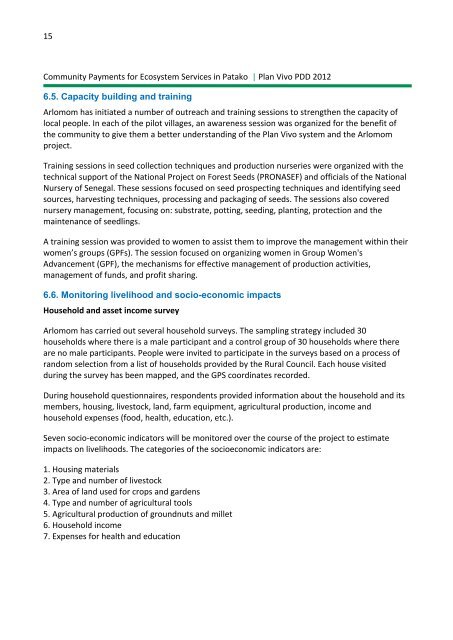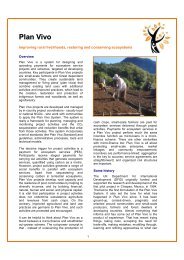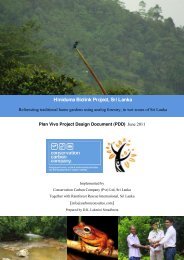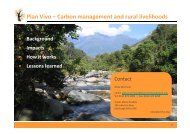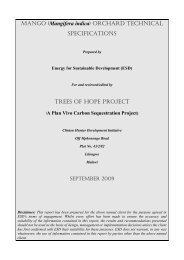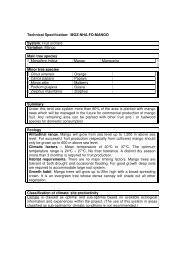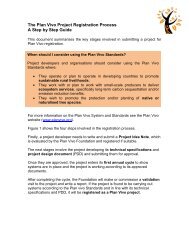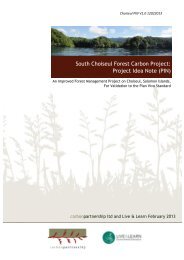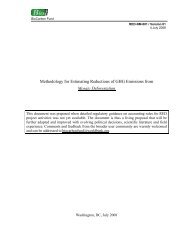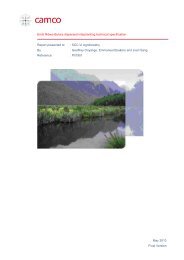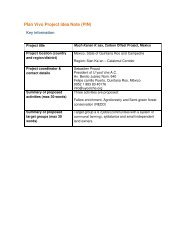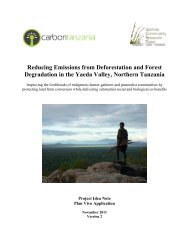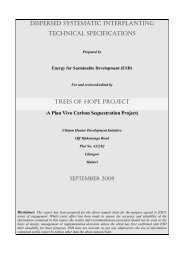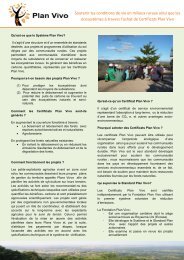Arbres locaux pour un monde meilleur | Local trees for a better world
Arbres locaux pour un monde meilleur | Local trees for a better world
Arbres locaux pour un monde meilleur | Local trees for a better world
Create successful ePaper yourself
Turn your PDF publications into a flip-book with our unique Google optimized e-Paper software.
15<br />
Comm<strong>un</strong>ity Payments <strong>for</strong> Ecosystem Services in Patako | Plan Vivo PDD 2012<br />
6.5. Capacity building and training<br />
Arlomom has initiated a number of outreach and training sessions to strengthen the capacity of<br />
local people. In each of the pilot villages, an awareness session was organized <strong>for</strong> the benefit of<br />
the comm<strong>un</strong>ity to give them a <strong>better</strong> <strong>un</strong>derstanding of the Plan Vivo system and the Arlomom<br />
project.<br />
Training sessions in seed collection techniques and production nurseries were organized with the<br />
technical support of the National Project on Forest Seeds (PRONASEF) and officials of the National<br />
Nursery of Senegal. These sessions focused on seed prospecting techniques and identifying seed<br />
sources, harvesting techniques, processing and packaging of seeds. The sessions also covered<br />
nursery management, focusing on: substrate, potting, seeding, planting, protection and the<br />
maintenance of seedlings.<br />
A training session was provided to women to assist them to improve the management within their<br />
women’s groups (GPFs). The session focused on organizing women in Group Women's<br />
Advancement (GPF), the mechanisms <strong>for</strong> effective management of production activities,<br />
management of f<strong>un</strong>ds, and profit sharing.<br />
6.6. Monitoring livelihood and socio-economic impacts<br />
Household and asset income survey<br />
Arlomom has carried out several household surveys. The sampling strategy included 30<br />
households where there is a male participant and a control group of 30 households where there<br />
are no male participants. People were invited to participate in the surveys based on a process of<br />
random selection from a list of households provided by the Rural Co<strong>un</strong>cil. Each house visited<br />
during the survey has been mapped, and the GPS coordinates recorded.<br />
During household questionnaires, respondents provided in<strong>for</strong>mation about the household and its<br />
members, housing, livestock, land, farm equipment, agricultural production, income and<br />
household expenses (food, health, education, etc.).<br />
Seven socio-‐economic indicators will be monitored over the course of the project to estimate<br />
impacts on livelihoods. The categories of the socioeconomic indicators are:<br />
1. Housing materials<br />
2. Type and number of livestock<br />
3. Area of land used <strong>for</strong> crops and gardens<br />
4. Type and number of agricultural tools<br />
5. Agricultural production of gro<strong>un</strong>dnuts and millet<br />
6. Household income<br />
7. Expenses <strong>for</strong> health and education


